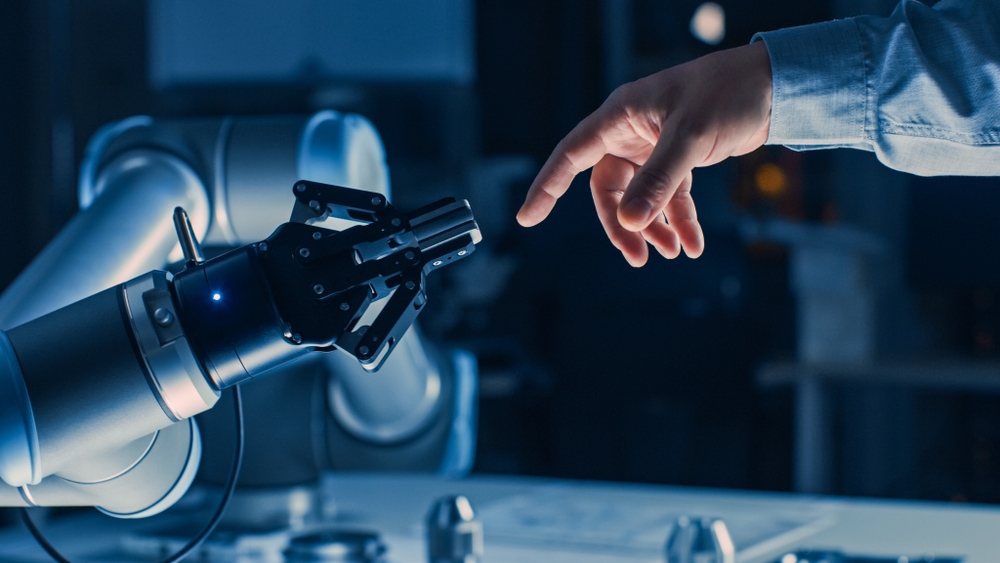News & Blog

How Will Robots be Used in 2020 and Beyond?
While the robotics industry has been growing for a number of years, the future of the robot workforce is where automated manufacturing will come into its own. Like it or not, companies that chose to progress with technology as it advances will undoubtedly gain the leading-edge over their industry.
So far 2020 has presented unfamiliar turns, the world is changing rapidly with many sectors quickly moving towards remote working and automation. Let’s look at how robotics will be used, not just in 2020, but beyond.
Warehouse Logistics
Once upon a time, manufacturing was the key to unlocking the potential for robotics. However, with an explosion of internet commerce, the inventory component has become such a key part of every business - efficiency is in high demand whilst human error needs to be minimised. Robotics are improving these areas and allowing businesses to operate to accurate schedules, with the ability to instantly update and utilise data. Sophisticated vision systems can now be integrated with robotic arms, allowing them to perform complex or fast-paced tasks that rely upon the use of sight, such as inspecting and sorting.
Commonly, automated systems conduct tasks which humans find repetitive or dangerous, however, with social distancing measures and hygiene concerns becoming ever more debated; many companies may look to fully automate their production lines. Another point of consideration for manufacturers is utilising a workforce with little to no downtime. Automated systems can be left alone overnight to perform tasks, allowing orders to be turned around quicker.
Healthcare
The emergence of COVID-19 has seen robotic applications being welcomed throughout the world. More than ever, robots have become integrated with health care systems and every-day tasks such as grocery shopping. This will naturally ease human populations into accepting the integration of robotics into our lives. Robots are able to decontaminate hospitals and take patients’ temperatures, as well as identify those not wearing masks.
Whilst robot-assisted surgery currently exists for prostatectomies, cardiac valve repair and gynecologic surgical procedures; robotics will continue to be developed and eventually be used in a much wider range of applications.
Initial tests have highlighted that doctors can remotely perform robotic surgery over 1,000 miles away from a patient. As a result, this will allow specialists to perform unique surgeries. In addition, robots will be able to transport and deliver medicine and equipment through hospitals, allowing doctors and nurses to focus on the more important tasks at hand.
Dangerous Working Environments
An extreme example of robots in a dangerous workplace would be the use of a remote-controlled bomb disposal machines. However, most people don’t realise that robots are also used to perform tasks like welding, the inspection of burning buildings for firefighters, rescuing snow-related disaster victims, fuel tank and pipeline inspections, cleaning nuclear sites and even cow herding.
Robotic vision systems are making collaborative robots, or ‘cobots’ safer in the workplace. One example of this is shutting down machinery when a vision system detects a human is too close to a hazard.
According to Automatica trend index, an impressive 77% of workers in the United Kingdom say they would prefer robots to perform dangerous tasks, it’s safe to assume that in the future; robotics will have a bigger role in helping workers in hazardous environments such as construction. Whilst robots were initially designed to function for single tasks, technology has allowed for more resilient robots, which lend themselves to a wide variety of dangerous environments.
Self-Driving Cars
Recent events have highlighted that self-driving cars aren't ready just yet, certain aspects of autonomous vehicles like monorails have been functioning for quite a while. Self-driving vehicles will become part of society, but in smaller, less dangerous areas, such as food delivery. Self-driving cars are being tested but whether people would feel comfortable having a car drive them to their destination remains to be seen.
Summary
It’s plain to see we’re using robot systems more frequently in many areas of our lives. We’re not just reliant on them in factory settings, but are coming to the conclusion that robotics will become more integrated into our homes and everyday lives.
There has never been a better time to incorporate automated systems into business settings. RoboMotion provides a wide variety of robot solutions for manufactures across the UK. If you would like to talk about the advantages of an automated workforce in your business setting, call our friendly team on 01746 866 711, or email us at info@robomotion.co.uk today.